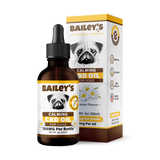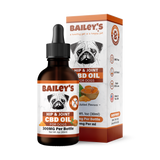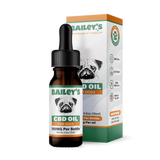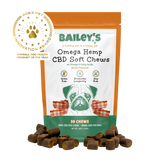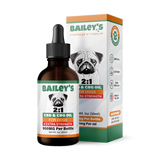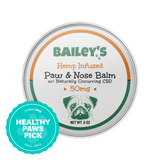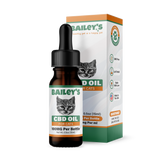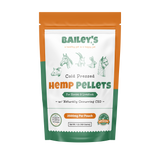Crab and Cats: Feline Dietary Caution

Cats are known for their curiosity and adventurous nature, both of which can lead them to sample various foods. However, cat owners must be cautious when it comes to their feline friends' diet. One specific food that requires careful consideration is crab.

While cats may find the taste of crab irresistible, there are several factors to keep in mind when deciding whether to incorporate it into their diet. The fine folks at Bailey’s CBD are here to help us understand the full picture of how best to care for the nutritional needs of our favorite felines.
Table of Contents
1. Understanding Feline Dietary Needs
Cats have unique dietary needs that differ from those of other animals. As obligate carnivores, they require a diet rich in animal protein to thrive. Additionally, they have specific requirements for essential amino acids, vitamins, and minerals.
When it comes to feline nutrition, it's important to understand the basics of a cat's diet. A cat's diet should primarily consist of high-quality commercial cat food that is specifically formulated to meet their nutritional needs. These foods are carefully balanced to provide the necessary nutrients in the correct proportions. They typically contain animal-based proteins as the primary ingredient.
However, it's not just about the protein content. Cats also need a balance of fats and carbohydrates in their diet. Fats provide essential fatty acids that support healthy skin and coat, while carbohydrates provide energy. The right balance of these macronutrients is crucial for a cat's overall health and well-being.
1.1 The Basics of a Cat's Diet
Commercial cat foods come in various forms, including dry kibble, wet canned food, and semi-moist options. Each type has its advantages and disadvantages, and the choice depends on the individual cat's preferences and specific dietary needs.
Dry kibble is convenient and can be left out for cats to graze throughout the day. It also helps promote dental health by reducing plaque and tartar buildup. On the other hand, wet canned food has a higher moisture content, which can help keep cats hydrated, especially those who don't drink much water. Semi-moist food is a middle ground between dry and wet food, offering a balance of convenience and moisture.
It's important to note that not all commercial cat foods are created equal. Some may contain fillers, artificial additives, or low-quality ingredients. Reading the labels and choosing a reputable brand is essential to ensure that your cat is getting the best nutrition possible.
1.2 Special Dietary Considerations for Cats
While high-quality commercial cat food is suitable for most cats, there are instances where cats may require a specialized diet due to underlying health conditions or specific dietary restrictions. For example, cats with kidney disease may benefit from a low-protein diet to reduce the workload on their kidneys.
Other cats may have food allergies or sensitivities, requiring a limited ingredient diet or novel protein sources. These instances should be discussed with a veterinarian, who can provide guidance and recommend appropriate dietary modifications.
Additionally, some cats may have weight management needs. Obesity is a common issue among cats, and a veterinarian may recommend a weight-loss diet that is lower in calories but still provides all the necessary nutrients.
Understanding feline dietary needs is crucial for providing optimal nutrition to our feline friends. A balanced diet, consisting of high-quality commercial cat food, is the foundation of a healthy cat's diet. However, special dietary considerations may arise, and consulting with a veterinarian is essential to ensure that any specific needs or restrictions are met.
2. The Appeal of Crab for Cats
Crab is a type of seafood that many cats find incredibly appealing. The unique taste and texture of crab can be enticing to cats, leading them to express great interest in this shellfish.
When it comes to seafood, cats have a natural affinity for it. Their carnivorous instincts drive them to seek out and consume animal-based proteins. The high protein content and distinct aroma of seafood make it particularly attractive to cats. The smell alone can make their whiskers twitch with anticipation.
But what is it about crab specifically that makes it so irresistible to our feline friends? Let's take a closer look.
2.1 Why Cats are Attracted to Seafood
Cats are known for their discerning palates, and seafood is often at the top of their list of favorite foods. The strong scent of seafood, including crab, can trigger their hunting instincts and make them feel like they're indulging in a fresh catch.
Seafood, including crab, is also packed with essential nutrients that cats need to thrive. The high protein content in crab meat provides the building blocks for strong muscles and healthy growth. Additionally, the omega-3 fatty acids found in seafood can support brain development and promote a healthy heart.
It's no wonder that cats are naturally drawn to seafood. The combination of taste, smell, and nutritional value makes it an irresistible choice for our feline companions.
2.2 Nutritional Value of Crab for Cats
Crab offers several important nutrients that can contribute to a cat's overall health. It is a rich source of lean protein, omega-3 fatty acids, and essential minerals such as zinc and selenium.
Protein is essential for cats as it provides the necessary amino acids for muscle growth, repair, and maintenance. The lean protein in crab can help support a cat's active lifestyle and keep their muscles strong and healthy.
Omega-3 fatty acids, commonly found in seafood, have numerous benefits for cats. They can help reduce inflammation, support a healthy immune system, and promote optimal brain function. These fatty acids are particularly important for cats with joint issues or skin conditions.
In addition to protein and omega-3 fatty acids, crab also contains essential minerals like zinc and selenium. These minerals play a crucial role in various bodily functions, including immune system function, cell growth, and antioxidant activity.
By incorporating crab into a cat's diet, pet owners can provide their feline companions with a delicious and nutritious source of food. However, it's important to remember that moderation is key. While crab can be a healthy addition to a cat's diet, it should always be offered in appropriate portions and prepared in a way that is safe for feline consumption.
3. Potential Risks of Feeding Crabs to Cats
While crab may have some nutritional benefits for cats, there are potential risks associated with incorporating it into their diet.
3.1 Health Hazards of Seafood for Cats
Seafood, including crab, has the potential to contain harmful bacteria such as Salmonella or Listeria. If not handled and prepared properly, these bacteria can lead to foodborne illnesses in cats. It is crucial to ensure that any seafood offered to cats is fresh, thoroughly cooked, and free from contaminants.
In addition to bacterial contamination, seafood can also contain high levels of mercury. Mercury is a toxic metal that can accumulate in the body over time, leading to various health issues. While crabs generally contain lower levels of mercury compared to larger fish species, it is still important to moderate the amount of seafood, including crab, in a cat's diet to prevent mercury poisoning.
Furthermore, certain types of seafood, including crab, may contain parasites such as tapeworms. These parasites can cause gastrointestinal issues in cats, leading to symptoms like diarrhea, weight loss, and a dull coat. Regular deworming and proper cooking of seafood can help minimize the risk of parasite infestation.
3.2 Allergies and Sensitivities of Crab
Just as humans can have food sensitivities and allergies, cats can also be allergic to certain foods. Crab allergies are relatively rare in cats, but they do occur. Symptoms of an allergic reaction may include vomiting, diarrhea, itchiness, and respiratory distress. If you suspect your cat has a food allergy, consult your veterinarian for proper diagnosis and guidance.
It's worth noting that some cats may not necessarily be allergic to crab itself, but rather to other components commonly found in seafood, such as histamines. Histamine intolerance can cause similar symptoms to an allergic reaction and may require dietary adjustments to alleviate discomfort.
Additionally, cats with pre-existing medical conditions, such as kidney disease or pancreatitis, may be more susceptible to adverse reactions from consuming crab. These conditions can be exacerbated by the high protein and fat content of seafood, potentially leading to digestive issues and organ strain. It is crucial to consult with a veterinarian before introducing crab or any new food into a cat's diet, especially if they have underlying health concerns.

4. Safe Ways to Include Crab in a Cat's Diet
If you decide to introduce crab into your cat's diet, it is essential to do so safely and responsibly.
Crab is a delicious seafood that many humans enjoy, and you may be tempted to share this tasty treat with your feline friend. However, it is important to remember that cats have different nutritional needs than humans, and not all human foods are safe for them to consume. When it comes to crab, there are a few things you should keep in mind to ensure your cat's safety and well-being.
4.1 Preparing Crab for Your Cat
The crab should be cooked thoroughly before offering it to your feline companion. Cooking not only kills any potentially harmful bacteria but also makes it easier for cats to digest. Cats have a more sensitive digestive system compared to humans, and consuming raw or undercooked crab can lead to food poisoning or other health issues.
When cooking crab for your cat, it is important to remove any shells, bones, or cartilage. These can pose a choking hazard or cause digestive issues if ingested. While the soft meat of the crab is safe for cats to eat, the hard parts can cause harm. So, take the time to carefully remove any non-edible parts before serving it to your cat.
4.2 Portion Control and Frequency
When feeding crab to your cat, moderation is key. Too much crab, or any new food, can upset your cat's stomach or cause gastrointestinal issues. While crab can be a tasty and nutritious addition to your cat's diet, it should be offered as an occasional treat rather than a regular component of their meals.
Additionally, it is important to consider the portion size when giving crab to your cat. The amount of crab your cat can safely consume depends on their size and age. Kittens and smaller cats should be given smaller portions, while larger cats may be able to handle slightly larger servings. It is always a good idea to consult with your veterinarian to determine the appropriate portion size for your cat.
Remember, every cat is unique, and what works for one may not work for another. Some cats may have allergies or sensitivities to certain foods, including crab. Therefore, it is crucial to monitor your cat's reaction when introducing any new food into their diet. If you notice any signs of discomfort, such as vomiting, diarrhea, or changes in behavior, discontinue feeding the crab and consult your veterinarian.
5. Alternatives to Crab in a Cat's Diet
If you are hesitant to incorporate crab into your cat's diet, there are alternative options to consider that can provide similar nutritional benefits.
5.1 Other Seafood Options for Cats
Several other seafood options can be safely included in a cat's diet. Fish such as salmon and tuna can offer similar nutritional value to crab. It is essential to follow the same guidelines for preparation and portion control as with crab.
5.2 Non-Seafood Protein Sources for Cats
If seafood is not an option or if your cat has allergies or sensitivities, there are plenty of non-seafood protein sources available. High-quality commercial cat foods often contain poultry, beef, or even novel proteins such as venison or rabbit.
6. Conclusion
In conclusion, while crab may be appealing to cats and offer some nutritional benefits, it is crucial to approach the inclusion of this seafood in their diet with caution. Consideration should be given to the potential risks, such as foodborne illnesses and allergies. If you choose to offer crab to your cat, ensure proper preparation and portion control. Alternatively, explore other seafood or non-seafood protein options that can provide similar nutritional value. Always consult with a veterinarian to ensure that your cat's dietary and supplementary needs are being met most safely and appropriately.

